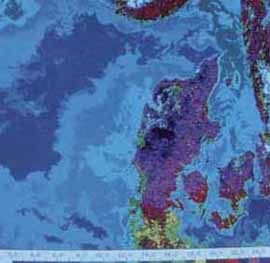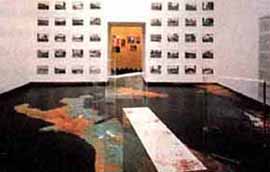mapping |
Mapping
 |
 |
 |
New the large scales would demand a cognitive mapping that, through its representational failure, evidences the cartography limits, of the traditional location devices. A genealogical approach that shows what the mapping has left as being accessible through the proper maps. They require a play between the presence and the absence, in order to transmit some of the sense that these new and enormous global realities are inaccessible to any individual subject. Non-representable basic realities, that cannot appear to perception. How, then, to turn conceptually accessible these realities?
It is necessary to search for a type of figuration adjusted for these processes. To transfer the visual map of the city to the globe, adding scales that escape to its dimensions. To dislocate the geographic figure, exceeding completely the limits of mapping. Thus, given that the impossibility of mapping space has weaken the urban experience, Jameson points to the necessity of an aesthetics of the mapping.
But this spatial anesthetization would be the only way to face the crisis of representation generated for the new scales of space and time? The periodic transformations in the parameters of experience and perception of space and time, compressed by technical development, transport and communication acceleration, produce reevaluations in the modes to represent the world. Critics to the map as a totalizing instrument, dedicated to the homogenization of the differences, appear when becomes evident the lack of means to representing the changes of space-time dimensions.
The revival of the aesthetics of place would be typical of the impact of the flexible contemporary restructuring on the metropolitan spatiality. The tendency is to untie the urban space, now autonomous, from functions, incorporating aesthetics strategies independent of any determination. A rhetoric of the image imposes itself, of modes of apprehension directly tied to the individual experience and observation, but mediated by an advertising apparatus that tend to convert everything into scenery and simulacrum. Would be an alternative to this politics of the anesthetized spatiality?
References
F. Jameson, Postmodernism, op. cit.
D. Harvey, The Condition of Postmodernity, Blackwell, Cambridge, 1990.
Images
P.Fender, Processed imagery of the north
sea, 1988.
P.Fender, Ocean earth site simulator for tivat bay, 1991.
S.Boeri, Sections of italian landscape, 1996.